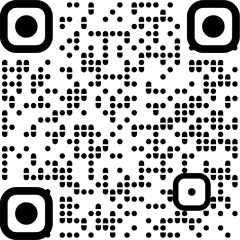United States President Donald Trump announced on Wednesday that a 25% tariff will be imposed on goods imported from India starting August 1, with an unspecified penalty for buying Russian weapons and oil.
The surprise announcement came a day after Indian officials said that a US trade team would visit from August 25 to negotiate a trade deal. The announcement is being seen a pressure tactics to get New Delhi to agree to demands made by the US, which has in recent days got favourable trade deals with major partners like Japan, the UK and the European Union.
Commenting on the 25% tariff, Harsha Vardhan Agarwal, President, FICCI said, “While this move is unfortunate and will have a clear bearing on our exports, we hope that this imposition of higher tariffs will be a short-term phenomenon and that a permanent trade deal between the two sides will be finalised soon.”
“India and U.S. have a long-standing partnership, which is strengthened by our deepening engagement across an array of areas from technology to defence to energy and advance manufacturing. There is a lot our two countries can achieve together, and FICCI is confident that following the detailed deliberations that are currently underway, we will see beneficial outcomes for both countries when the contours of the final trade agreement will emerge,” he added.
Dr Ajay Sahai, DG and CEO of Federation of Indian Export Organisations (FIEO), said, “The 25 per cent tariff imposed on India is a little disappointing for us, and we are constantly engaged with the US on the BTA. The ‘penalty’ President Trump has talked about is also not clear… In a few months, there will be BTA between India and the US and these tariffs will come down significantly…”
US President Donald Trump had imposed reciprocal tariffs on dozens of countries with which the US has a trade deficit. Later, President Trump decided to pause the tariffs for 90 days after many countries initiated talks with the US administration for a trade deal. In these 90 days, starting April 9, and ending on July 9, President Trump imposed a 10 per cent baseline tariff on all countries.
The Trump administration had deferred imposing additional tariffs on several countries till August 1, and had indicated a further extension was unlikely. Since assuming office for his second term, President Trump has reiterated his stance on tariff reciprocity, emphasising that the United States will match tariffs imposed by other countries, including India, to ensure fair trade.
Ajay Srivastava, founder of the Global Trade Research Initiative, told ANI that 25 per cent tariffs would have a varied impact on different sectors. He essentially meant that India will have a competitive advantage vis-a-vis countries that have been slapped with even higher tariffs.
Claiming that the recent US-Indonesia trade deal was a “clear example of how aggressive US pressure can force” countries to ink one-sided agreements, think tank GTRI suggested India to be careful and not “fall into the same trap”.
“While the negotiations seem to have broken down, we don’t think the trade-deal haggling between the two nations is over yet. We see it more from the lens of geopolitics than purely economics and see both sides striving to get the deal done, even as the power equations may change a bit in U.S. favour,” said Madhavi Arora, Economist at Emkay Global.
“Higher tariffs for India compared to countries it competes with, for exports to the U.S., are going to be challenging. However, the expectation is that the trade deal is likely to be finalised shortly and hence the period of applicability of these higher tariffs could be short,” said R Anen Banerjee, partner of economic advisory at PWC India.
“Despite the unpredictable policy making of the U.S., the market was expecting a tariff deal to work out as longer-term U.S.-India strategic interests are aligned. Markets will hope for a ‘TACO’ trade if better senses prevail. China is defying U.S./UN sanction on Iran oil, Myanmar and Russia trade and North Korea support. Size and the competitiveness of the economy has its advantages. I hope and pray that this unilateral imposition should accelerate Indian policy making to be growth supportive. Our biggest deterrence continues to remain GDP size and competitiveness,” said Nilesh Shah, MD, Kotak Mahindra AMC.
“The decision to raise the U.S. tariff to 25% on Indian exports is an unfortunate development, particularly given the strong strategic partnership that has been steadily built between India and the USA in recent years. However, it’s important to note that both countries remain positively engaged in active negotiations with the U.S. team expected in India later in August to finalize a comprehensive trade agreement,” said Agneshwar Sen, Trade Policy Leader, EY India.

